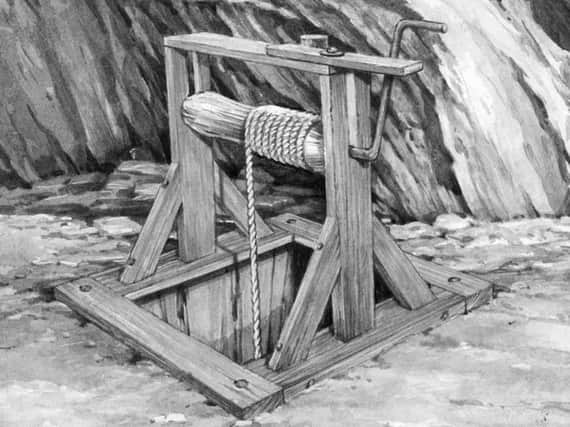Scolded for going down the pit at the age of 12


In May 1877, Mr T B Kayss put an advertisement in the Lancaster Guardian stating: “Mr Kayss begs to inform the public that he has recently opened an ancient colliery near Wray, where he has constantly at hand a large quantity of excellent coals, suitable for farmers, kitchen and general use. No other coals compare with them for stoves and hot-houses.”
After Mr Kayss’ death in 1878, aged 64, there are no more entries in the joiner’s ledger regarding the coal pit except on January 7, 1878, when it is recorded that the pit house was taken down by Mr Isaac Parker’s workmen.
Advertisement
Hide AdAdvertisement
Hide AdIn August 1889 another local businessman opened a coal pit on Birks Moss.
Mr Edward Dixon ran the Bobbin Mill at Millhouses near Wray.
He is only shown to have sunk one shaft, which can not have been very successful.
Mr Dixon must have been optimistic regarding the mining operation because in the Lancaster Guardian of 1889 it says that a person from Wray village was seeking miners from Ingleton for coal mining operations which were taking place near Wray.
Advertisement
Hide AdAdvertisement
Hide AdIt appears that none of the Ingleton miners felt disposed to engage in the work, their chief objection being the thinness of the Wray coal bed. The Ingleton beds were four feet and three feet in thickness. So it was not necessary for the Ingleton miners to do their work in a cramped and fatiguing position.
As a young boy I was enthralled by the story told by my grandfather, William Kenyon, of how in 1891, as a boy of 12, he worked down the Birks Moss coal pit for just one day.
William was persuaded to help in the mine by John and Robert Clarkson, aged 15 and 12 respectively.
It was very early in the morning and still dark when the miners arrived at William’s house to collect him.
Advertisement
Hide AdAdvertisement
Hide AdThe mine was near Birks Farm, a distance of approximately three miles from the village of Wray. William had with him some food wrapped in a piece of cloth, for the long day ahead, and a can of cold tea to drink.
On arriving at the pit shaft William was shown by the other miners how to put straw padding on his knees, in order to protect them as he crawled along the rough mine floor.
The coal mine tunnel at Birks Moss was approximately 19 inches high and six feet wide.
William’s task for the day was to drag corves loaded with coal from the coal face to the bottom of the mine shaft. The corves would then be hauled to the surface using the ‘turntree.’
Advertisement
Hide AdAdvertisement
Hide AdWhen William first arrived at the coal face, dragging the empty corve behind him, he found the miner lying on his side on a pad of straw, diligently cutting out the coal using a short miner’s pick.
The light came from candles which were stuck into lumps of clay. William loaded the corve with coal using a small short-handled shovel.
He had a chain fixed to a harness around his shoulders. The chain then passed through his legs and was securely fastened to the corve.
Dragging the heavy corves to the bottom of the mine shaft was difficult work.
Advertisement
Hide AdAdvertisement
Hide AdWilliam had to keep his head down at all times lest he should strike it on the low roof of the mine.
William worked hard all day and didn’t arrive home until after dark.
However, his mother severely scolded him on his return, for he had worn out his shoes crawling on his hands and knees. (William wore shoes rather than traditional wooden clogs as his maternal grandfather worked as a cobbler).
William’s new found employment turned out to be very short-lived indeed.